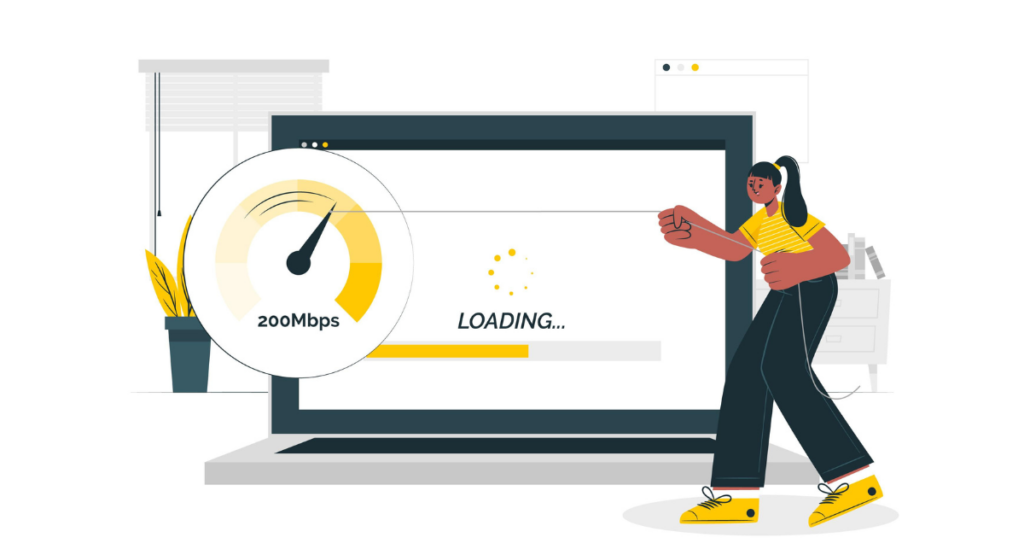In the present digital world, website speed becomes an essential factor that impacts user satisfaction and business success. Slow page loads frustrate visitors and decrease engagement; over a long time, this leads to revenue loss and damage to brand reputation.
A speed test performed on actual devices is extraordinarily efficient for measuring and improving the performance of websites. It provides real situations of how actual users will really experience a website under different conditions.
Therefore, for any kind of serious presence, this becomes quite essential online. This blog will help you understand how real device speed tests work and their benefits by getting deep into the working to extract the best out of your website performance, in order to meet today's digital fast-moving world expectations.
Speed Lab: Importance of Website Speed Tests on Real Devices

Impact of Website Speed on User Experience
Site speed is very critical for user interaction. Slow-loading websites increase the bounce rate since users usually have very limited patience over delays.
One second of delay in page response has been known to cause a 7% decrease in conversions. Moreover, Google itself incorporates site speed as an aspect of their ranking algorithms faster websites rank higher on search results.
Thus, testing with real devices ensures the website is going to work correctly under real-world conditions.
Benefits of Real Device Speed Tests
Testing website speed using real devices offers several advantages that can dramatically improve overall website performance. Some benefits include:
- Realistic conditions: Unlike simulators, real devices provide accurate feedback on how a website performs under typical user conditions.
- Diverse interactions: Real devices allow testers to see how interactions like scrolling, clicking, and typing affect performance.
- Browser diversity: Websites can be tested on various browsers that people actually use, which helps in optimizing for compatibility and speed across all platforms.
- Geographical diversity: Testing can be carried among different network conditions and regions, showing how geography impacts performance.
Ultimately, conducting speed tests on a variety of real devices prepares a website to perform optimally across all user scenarios.
How to Run a Website Speed Test on Real Devices
Choosing the Right Tools
Selecting appropriate tools is crucial for effectively running website speed tests on real devices.
Look for tools that can integrate seamlessly into existing workflows and provide detailed, actionable insights. Some popular options include Google's PageSpeed Insights, GTmetrix, and WebPageTest.
These tools not only analyze website speed but also offer suggestions for improvement, providing both high-level and in-depth perspectives of the performance.
Conducting the Test
To conduct a website speed test effectively, follow these steps:
1. Setup: Ensure that all devices are using the same network settings to avoid skewed results.
2. Testing: Run the performance tests simultaneously on different devices to get concurrent results.
3. Consistency: Perform multiple tests at different times of the day to account for potential fluctuations in internet speed.
4. Documentation: Record all results meticulously for accurate future analysis.
By systematically conducting these tests, one can gather reliable data regarding the website’s performance on various devices.
Analyzing the Results
After collecting the data, the next step is to analyze the results to pinpoint areas for improvement. Focus on metrics like load time, time to first byte, and user interaction times.
Evaluating these areas can help identify performance bottlenecks that may be device-specific or widespread. Using this information, developers can optimize images, adjust coding practices, or implement better caching strategies to enhance site speed.
Additionally, comparing performance across different devices helps in understanding how various elements respond to distinct hardware and network environments, leading to a more universally optimized website.
Interpreting Results and Implementing Improvements

When conducting a website speed test using real devices, the output data provides numerous performance metrics that are crucial for understanding your website's performance across different user environments.
Interpreting these results correctly is key to making impactful enhancements that truly enhance user experiences.
Identifying Performance Issues
The initial step involves identifying what specific elements are causing slowdowns. Key indicators to watch include:
- Load Time: It is the time until the pages are fully interactive, and this may indicate some problems with scripts or uncompressed content.
- Time to First Byte: TTFB measures how responsive your web server is. High TTFB indicates server or network-related problems.
- Resource Load Order: In some scenarios, resource load order can longicipate performance. For instance, CSS and JavaScript files may block the display speed of content.
- Image Size and Optimization: Large, unoptimized images are among the most common culprits behind slow loading times.
Individual device and network bottlenecks can be identified through these and many other detailed metrics from speed tests run on real devices.
Implementing Speed Optimization Strategies
Once performance issues have been identified, the next step is to apply effective speed optimization strategies. Common approaches include:
- Optimizing Images: Convert images to modern formats (like WebP) and implement responsive images that adjust according to the device.
- Minimizing JavaScript and CSS: Reduction and compression of CSS and JavaScript files can significantly improve load time.
- Leverage browser caching: these caching rules can ensure that returning visitors have progressively better load times since their browser locally saves your website's resources.
- Optimize server and server response time: web hosting, database optimization, and Content Delivery Networks (CDNs) sometimes do contribute to boosting server speed.
Implementing these techniques requires proactive web development, testing the results for changes on an ongoing basis, and making sure those changes have achieved their intended impact.
Case Studies: Real-Life Examples of Website Speed Test Improvements
The context setting for why and how these website speed optimizations will be done makes much more sense with some real-life examples.
- E-commerce platform: One e-commerce player conducted image optimization, optimized the checkout process, and moved to a faster hosting solution. This reduced its load time by 45%. This reduction resulted in a 20% increase in conversions.
- News Portal Redesign: A popular news website faced challenges with mobile users due to heavy content. After comprehensive testing on real devices, they employed lazy loading for images and ads, and optimized their content hierarchy.
Their efforts reduced mobile load times by 50%, and bounce rates decreased by 25%.
These examples demonstrate how dedicated efforts in speed optimization, guided by insights from real device testing, can dramatically improve website performance and user satisfaction.
Book a Demo and experience ContextQA testing platform in action with a complimentary, no-obligation session tailored to your business needs.
Conclusion: Enhancing Website Performance for Better User Experience
All that is done to ensure a great user experience can rest on actual devices. By making use of speed tests that mimic real user contexts, developers and designers can get insights on the issues and weaknesses in the process left unexposed to them while using simulators or emulators.
In the long run, the website has to be fast and engaging to the user, no matter the device. Real device testing stands at the core of big improvements in website performance.
It holds the reins for improved customer satisfaction, giving a competitive edge in today's digital world. Remember, a faster website not only retains users but also improves SEO rankings, driving more traffic and increasing conversions.
Also Read - How to write Test Cases (with Format & Example)
